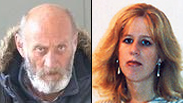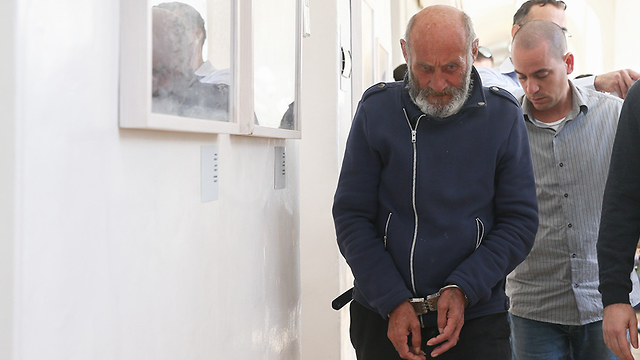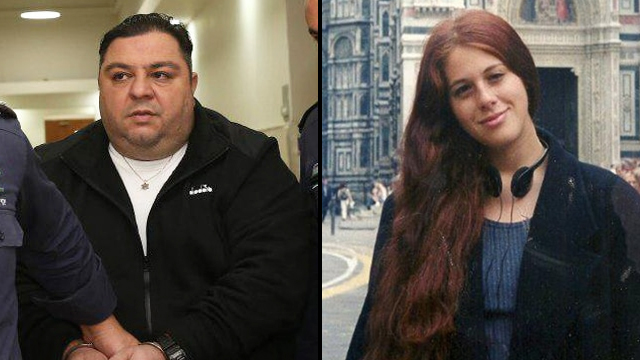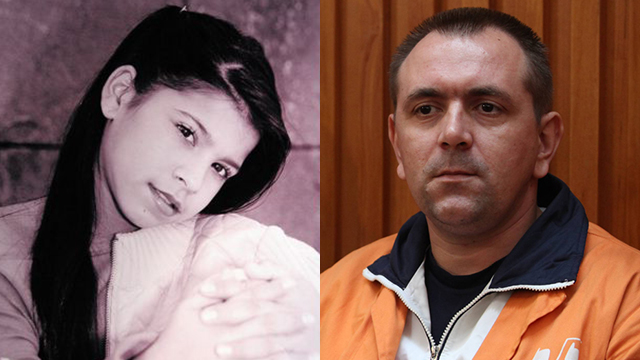
The things we see on television shows are a part of the routine for Israel's police forensic scientists and the Abu Kabir Forensic Institute in Tel Aviv. DNA technology enables them to put behind bars the culprits of crimes from the past, and now they reveal how things look from behind the scenes.
"Today we have very different tools to the ones we had 15 years ago," says Nurit Bublil, a DNA specialist with the Abu Kabir Forensic Institute. "The first leap took place in 2007, when the criminal DNA database was established at the police headquarters in Jerusalem. The bigger it grows, the more chances we have to find matches to crime scene discoveries. The ability to cross our finds with the database is a game changer… Our everyday routine has many more resources on its side now. It's a different ball game."
What about privacy issues? Who are the people whose DNA ends up in the database?
"Many people are worried about this, and wonder if they're in this database. The answer is that it includes only people who were suspected of crimes — not all crimes, it depends on the severity — and they have been informed that they're in it. Another question I often get asked is whether there's a connection between the criminal database and the biometric database, and the answer is no."

So what is forensic evidence?
"Forensic evidence is evidence that we examine with scientific tools, for judicial purposes," says Bublil. "It could be a knife, a T-shirt, any item found at the crime scene, or a biological sample from a victim or a suspect. It could also be a surface like a fabric or a metal… The key question is the sample's source, and whether we can find the sample's source and context — in other words, the person from whom the DNA originated. The sample can be derived from saliva, white blood cells, seamen or 'touch DNA', meaning from something the suspect touched at the scene of the crime."
However, DNA evidence doesn't always play a key role, and context is everything.
"For instance, if a person is shot from a passing vehicle while he's at a coffee house, DNA won't be significant since we know there was no contact between the victim and the assailant…. If we find a cigarette butt in an open field, it doesn't necessarily mean that the person who smoked it has anything to do with the murder scene. But if we find a cigarette butt in a car, it positively places an individual in that car."
Once the team finishes processing DNA evidence, they have a genetic profile to work with. "It's a collection of numbers, like an ID card, that maps areas where there are genetic differences between individuals," says Bublil. "It's a unique genetic map. A partial map — if, for example, the sample was exposed to the sun and the DNA 'broke' — can match more than one person. Thus, once I'm done with examining the data I can evaluate how strong the biological evidence is."
However, a new system called NGS (Next Generation Sequencing), allows researchers to produce a genetic profile from samples that were found in a partial or deteriorated state. "I might receive a sample from a car that was burned out, or a washed clean and had its seats replaced. It could even be a blood stain on a pair of jeans."
Bublil says that in such cases, outside materials can mix with the DNA sample, but the recent improvements allow researchers to extract DNA from small or contaminated samples.
"We now have a chance to examine older samples that were impossible to decipher before. We do that all the time, the police don't rest in that regard."

One of the most pressing questions nowadays is whether researchers will be able to extract DNA from skeletal remains of infants, as part an investigation into the abduction of the children of Yemen, the Middle East and the Balkans, allowing a comparison between samples and family members who are still alive. "These are 70-year-old samples of children, with very little organic mass to begin with," says Bublil. "However, as technology improves, we might be able to succeed in extracting DNA."
Another exciting benefit of the new technology could give researchers insights about an individual's ancestry. "We're a country of immigrants… This angle could significantly push investigations forward," she says.
Avner Rosengarten, a former forensic scientist for the Israel Police, established the Forensic Science Institute, a private laboratory, in 2007.
"I saw a need to help the defense; a parallel niche to the one police forensic scientists fulfill for the prosecution. Defense attorneys for criminal suspects approach us, we examine the scientific aspects of the evidence and if we can help — we give our professional opinion and testify in court," says Rosengarten.
How did infamous cases get resolved using DNA?
"With the Noa Eyal murder, a simple paternity test was enough," says Rosengarten. "The suspect's father was arrested on a different charge, and when his DNA went up in the system he was found to be related to an unknown individual who was at the murder scene back in 1998. Then, his son was followed by police who waited until he spat on the floor, and then they got him."
"Another recent case that was solved — the rape and murder of Vardit Bakraknot in 1993 — relied on DNA evidence that connected the killer to a specific area in Eastern Europe and a specific extended family. Researchers found a limited group of people who fit this description, and compared the samples to the one found in the car that Vardit got in before she was killed. There is a lot of importance to creative thinking here."
Rosengarten's institute has already been linked to some high-profile cases in which the suspect was acquitted, like the case of Nissim Hadad, 43, who was convicted of sexually assaulting an18-month-old baby, and was acquitted on the basis of blood stain analysis, Rosengarten's area of expertise.

"It's a blessing that crimes are solved with DNA today," Rosengarten says, "but you also need a lot of luck. Some crimes will remain unsolved, in cases where the DNA found at the scene won't be able to prove who the killer was."
Rosengarten was a senior forensic scientist in the 2006 Tair Rada murder case, which still moves the country despite a 2010 conviction. The murder scene, a school toilet in a Golan Heights town, was filled with forensic evidence that didn't contain the DNA from the convicted killer Roman Zadorov.
"The scene was full of blood — Tair's blood," says Rosengarten . "If there was a tiny piece of skin from the killer in that blood, it would be difficult or even impossible to find it."

















